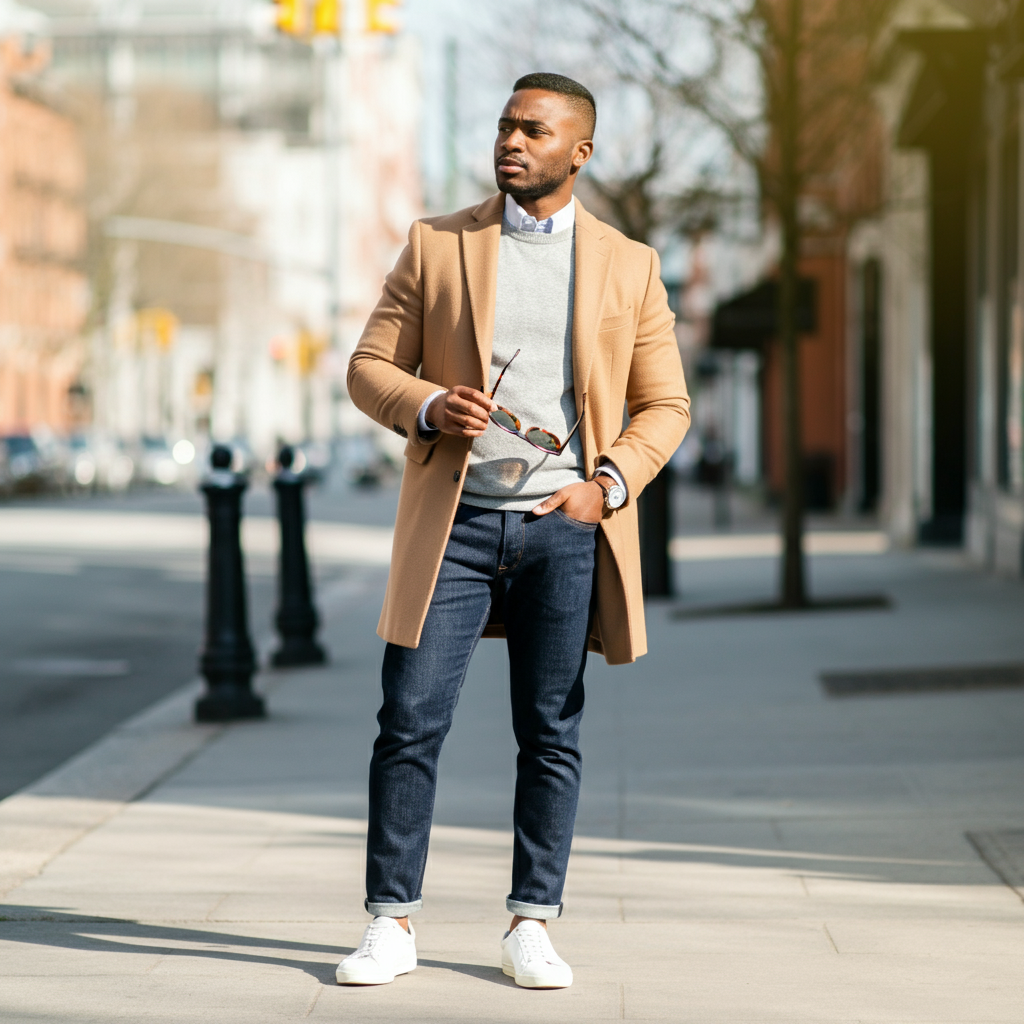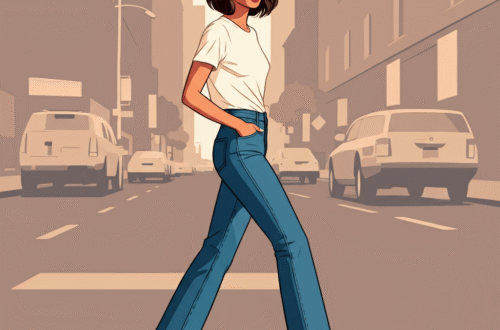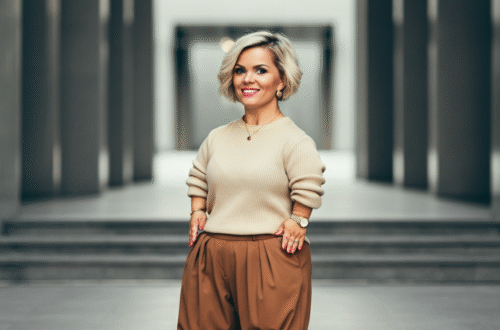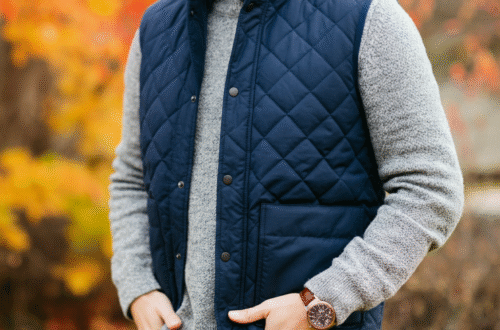Becoming a fashionista male is about more than just wearing expensive clothes. It’s about expressing your personality, understanding what looks good on you, and building a wardrobe that is both stylish and functional. It means you appreciate the art of dressing well and use clothing as a tool for self-expression. This guide will walk you through the essential elements of men’s style, from mastering the basics to embracing advanced concepts like layering and color theory. We’ll explore how to build a versatile wardrobe, find the right fit for your body type, and accessorize with confidence. Whether you’re just starting your style journey or looking to refine your look, you’ll find actionable tips to elevate your fashion game and truly embody the modern fashionista male.
Key Takeaways
- Fit is King: The most important rule in men’s fashion is how your clothes fit. Proper tailoring can make even an inexpensive outfit look high-end.
- Build a Capsule Wardrobe: Focus on acquiring high-quality, versatile basics that can be mixed and matched to create numerous outfits.
- Understand Your Body Type: Dressing well means knowing what silhouettes and styles flatter your unique shape.
- Master Accessories: The right watch, belt, or pair of sneakers can completely transform an outfit from simple to stylish.
- Grooming Matters: A great outfit is only half the battle. Personal grooming is a critical component of a polished appearance for any fashionista male.
What Defines a Fashionista Male?
A fashionista male is a man who has a keen interest in fashion and uses it as a form of personal expression. This goes far beyond simply following trends. It’s about having a deep appreciation for craftsmanship, understanding the principles of style, and curating a wardrobe that reflects a unique point of view. This individual isn’t afraid to experiment with different looks, from classic tailoring to modern streetwear. He understands the power of a well-fitted suit just as much as he appreciates the cultural significance of a rare pair of sneakers. A true fashionista male pays attention to the details—the cut of a jacket, the quality of the fabric, and the way an accessory complements an outfit. He is knowledgeable about designers, brands, and the history of clothing, using this information to make informed choices. Ultimately, being a fashionista male is about confidence and authenticity, using clothing to present the best version of yourself to the world.
The Foundation: Building a Capsule Wardrobe
Every stylish man needs a solid foundation. A capsule wardrobe is a collection of essential, high-quality items that can be mixed and matched to create a wide variety of outfits. This approach prioritizes quality over quantity, ensuring you always have something great to wear. For a fashionista male, this means investing in timeless pieces that won’t go out of style next season. Think of items like a classic white t-shirt made from premium cotton, a pair of perfectly fitting dark-wash denim jeans, a versatile navy blazer, and a crisp white button-down shirt. Other essentials include a pair of neutral-colored chinos (like khaki or grey), a quality leather belt, and a stylish yet functional jacket, such as a bomber or field jacket. By building your wardrobe around these core pieces, you create a versatile base that can be easily updated with seasonal trends or statement items.
Key Pieces for Your Capsule Wardrobe
- Tops: Several well-fitting t-shirts in neutral colors (white, black, grey, navy), a few button-down shirts (oxford, chambray), and a quality sweater (crewneck or V-neck).
- Bottoms: Dark-wash denim, a pair of chinos in a neutral color, and tailored trousers.
- Outerwear: A versatile jacket (bomber, denim, or field jacket) and a classic overcoat for colder weather.
- Footwear: White leather sneakers, a pair of dress shoes (like Oxfords or Derbies), and casual boots.
The Importance of Fit and Tailoring
The single most important rule in men’s fashion is fit. You could be wearing the most expensive designer suit, but if it doesn’t fit you correctly, it will look cheap. A true fashionista male understands that tailoring is not a luxury; it’s a necessity. Getting your clothes altered to fit your specific body type can transform your entire look. A tailor can make simple adjustments, like hemming trousers to the perfect length, taking in the sides of a shirt for a slimmer silhouette, or adjusting the sleeves of a jacket. These small changes make a massive difference, creating clean lines and a polished appearance. When shopping, pay attention to how clothes fit your shoulders, chest, and waist. The shoulder seam of a shirt or jacket should sit right at the edge of your shoulder. You should be able to button a jacket without it pulling, and your pants should stay up without a belt.
Navigating Dress Codes: From Casual to Formal
Understanding different dress codes is essential for any fashionista male. Knowing what to wear for any occasion shows respect and social awareness. Let’s break down the most common ones.
Smart Casual
Smart casual is a popular but often confusing dress code. It strikes a balance between relaxed and professional. For a perfect smart casual look, think about pairing elevated basics. For example, combine dark-wash jeans or chinos with a button-down shirt and a blazer or sport coat. You can also wear a quality knit sweater over a collared shirt. For footwear, loafers, desert boots, or clean leather sneakers are excellent choices. Avoid ripped jeans, graphic t-shirts, and athletic sneakers. The key is to look put-together without being as formal as you would be in a full suit. It’s a versatile code that works for creative workplaces, nice dinners, and many social events.
Business Casual
A step up from smart casual, business casual is the standard for many modern offices. It requires a more professional appearance but doesn’t demand a full suit and tie. A typical business casual outfit includes dress trousers or chinos, a collared dress shirt (an Oxford shirt is a great choice), and dress shoes like loafers or Derbies. A blazer or sport coat is often recommended but may not always be necessary, depending on the workplace. In colder months, a V-neck sweater over your collared shirt is a stylish and appropriate option. While a tie is generally not required, adding one can elevate the look for an important meeting. The goal is to appear professional, approachable, and competent.
Formal and Black Tie
Formal wear is reserved for special occasions like weddings, galas, or award ceremonies. The pinnacle of formal wear is “black tie,” which has a very specific set of rules. A classic black tie outfit consists of a black tuxedo, a white formal shirt with a pleated or bib front, a black bow tie, and black patent leather shoes. A cummerbund or a formal waistcoat is also part of the traditional look. For events labeled “formal” but not “black tie,” a dark suit (navy or charcoal) with a white dress shirt, a conservative tie, and black dress shoes is generally appropriate. The fashionista male knows that the details, like a perfectly tied bow tie and polished shoes, are what make a formal look truly stand in these situations.
The Power of Accessories
Accessories are the secret weapon of the fashionista male. They are the finishing touches that can elevate a simple outfit into something memorable and personal. Accessories allow you to inject personality into your look without overhauling your entire wardrobe. Even a basic t-shirt and jeans can look incredibly stylish with the right additions. Start with the essentials: a great watch, a quality leather belt, and a versatile pair of sunglasses. A watch, in particular, speaks volumes. Whether it’s a rugged dive watch, a classic dress watch, or a modern smartwatch, it adds a touch of sophistication. From there, you can explore other items like bracelets, subtle necklaces, pocket squares for your blazers, or stylish hats. The key is to choose accessories that complement your outfit and reflect your personal style, rather than overwhelm it.
Streetwear vs. Classic Menswear
The world of men’s fashion is often seen as a spectrum with streetwear on one end and classic menswear on the other. A modern fashionista male knows how to draw inspiration from both. Streetwear is rooted in youth culture, often featuring graphic tees, hoodies, sneakers, and looser fits. It’s about comfort, attitude, and brand identity. Classic menswear, on the other hand, is built on the traditions of tailoring, focusing on timeless silhouettes like suits, blazers, and dress shoes.
Here is a simple comparison:
|
Feature |
Streetwear |
Classic Menswear |
|---|---|---|
|
Focus |
Comfort, trends, brand logos |
Timelessness, fit, craftsmanship |
|
Key Items |
Hoodies, sneakers, graphic tees |
Suits, blazers, leather shoes |
|
Fit |
Often oversized or relaxed |
Tailored and structured |
|
Inspiration |
Skate, hip-hop, youth culture |
Military, sporting, formal traditions |
The most stylish men today often blend elements from both worlds. For instance, pairing a tailored blazer with clean, minimalist sneakers or wearing a luxury hoodie under a classic wool overcoat. This high-low mix creates a look that is both sophisticated and relevant.
Mastering Color and Layering
Understanding how to use color and layer clothing effectively can take your style to the next level. These are skills that truly distinguish a fashionista male. Color theory isn’t as complicated as it sounds. Start with a neutral base—think black, white, grey, navy, and khaki. These colors go with everything. Then, introduce one or two accent colors. For example, a neutral outfit of grey trousers and a white shirt can be brought to life with a rich burgundy sweater or a forest green jacket.
Layering is both a practical and a stylistic choice. It adds visual depth and complexity to an outfit, making it more interesting. The key to successful layering is to work from thin to thick. Start with a lightweight base layer, like a t-shirt or a thin shirt. Add a middle layer, such as a sweater, a vest, or an open button-down shirt. Finish with your outermost layer, which is typically a jacket or coat. A great example is a t-shirt, topped with a denim jacket, under a wool overcoat. This technique allows you to adapt to changing temperatures while looking effortlessly stylish.
The Role of Grooming in Men’s Fashion
Fashion isn’t just about the clothes you wear; it’s about your entire presentation. Grooming is a critical, and often overlooked, component of style for any man, especially a fashionista male. A well-thought-out outfit can be completely undermined by messy hair, an untamed beard, or bad skin. A solid grooming routine starts with the basics: a good haircut that suits your face shape, a consistent skincare regimen, and attention to facial hair. Whether you are clean-shaven or have a beard, it should be neat and deliberate. Skincare is also essential. Cleansing and moisturizing daily will keep your skin looking healthy and vibrant. Don’t forget about details like clean, trimmed nails and a subtle, pleasant scent. A signature cologne can be the final, invisible touch that completes your personal brand. Investing time in grooming shows that you care about yourself and the image you project.
Finding Your Personal Style on a Budget
You don’t need a huge budget to be a fashionista male. Style is about creativity and knowledge, not just money. The key is to shop smart. Start by investing in high-quality basics from affordable retailers during sales events. A well-made pair of jeans or a classic jacket will serve you better than a dozen trendy, low-quality items. Thrift stores and consignment shops are treasure troves for unique, high-quality pieces at a fraction of the original price. You can often find vintage denim, wool coats, and leather goods that have stood the test of time. Another great strategy is to focus on fit. A $50 suit that has been tailored to fit you perfectly will look better than a $500 suit off the rack. Learn what looks good on you and stick to it, rather than chasing every fleeting trend. Building a stylish wardrobe is a marathon, not a sprint.
Sustainable Fashion for the Modern Man
Today, being a true fashionista male also involves being a conscious consumer. The sustainable fashion movement is gaining momentum, and for good reason. It encourages us to think about the environmental and ethical impact of our clothing choices. This means shifting away from “fast fashion”—cheap, trendy clothing that is designed to be thrown away after a few wears. Instead, focus on buying fewer, better things. Look for brands that are transparent about their supply chains and use eco-friendly materials like organic cotton, linen, or recycled fabrics. Supporting companies committed to ethical manufacturing practices is another important step. Additionally, extending the life of your clothes by caring for them properly, repairing them when needed, and shopping secondhand are all powerful ways to participate in the sustainable fashion movement. For more information on brands and practices, the truefashionstory.com Blog offers great insights.
Conclusion: Embrace Your Inner Fashionista
Becoming a fashionista male is a rewarding journey of self-discovery. It is not about adhering to a strict set of rules but about learning the principles of style so you can confidently make them your own. Start by mastering the fit of your clothes and building a versatile capsule wardrobe of timeless essentials. From there, experiment with color, layering, and accessories to inject your unique personality into every look. Pay attention to grooming, as it completes your overall presentation. Remember that style is not about how much you spend, but how you put things together. Be curious, draw inspiration from different places, and don’t be afraid to try new things. By embracing these concepts, you can develop a strong sense of personal style that empowers you in every aspect of your life.
Frequently Asked Questions (FAQ)
Q1: How can I find my personal style?
A1: Finding your personal style is a process of experimentation. Start by creating a mood board with images of outfits you admire. Identify common themes—are you drawn to minimalist looks, rugged workwear, or classic tailoring? Try incorporating elements of these styles into your wardrobe one at a time. Pay attention to what makes you feel confident and comfortable.
Q2: What are the most common style mistakes men make?
A2: The most common mistake is wearing clothes that don’t fit properly, especially clothes that are too big. Other frequent errors include wearing wrinkled clothes, choosing loud or clashing patterns without understanding how to pair them, and neglecting footwear. Your shoes can make or break an outfit.
Q3: How many pairs of shoes does a man really need?
A3: While you can build a large collection, a man can get by with a few versatile pairs. We recommend starting with at least three: a pair of clean, white leather sneakers for casual wear, a pair of dark brown or black leather dress shoes (like Oxfords or Derbies) for formal occasions, and a pair of sturdy boots for colder weather or more rugged looks.
Q4: Is it okay to wear sneakers with a suit?
A4: Yes, wearing sneakers with a suit can be a very stylish, modern look, but it has to be done right. The suit should be slim-fitting and preferably made from a more casual material. The sneakers must be clean, minimalist, and low-profile—think simple leather sneakers, not chunky running shoes. This look is best for creative or social settings, not a conservative corporate office.





